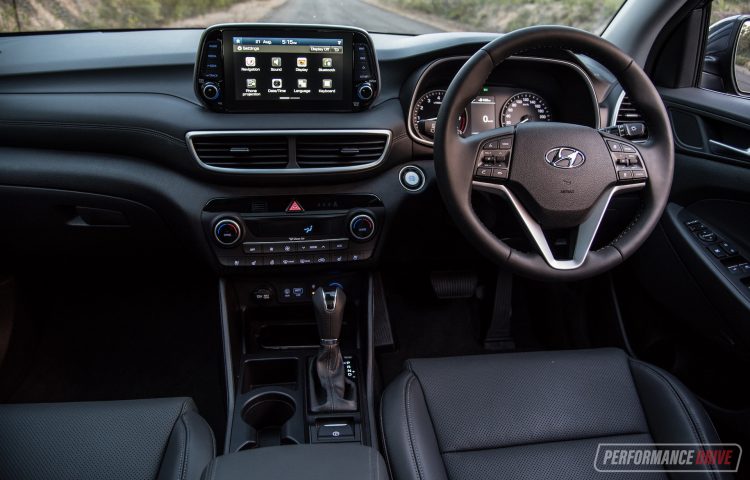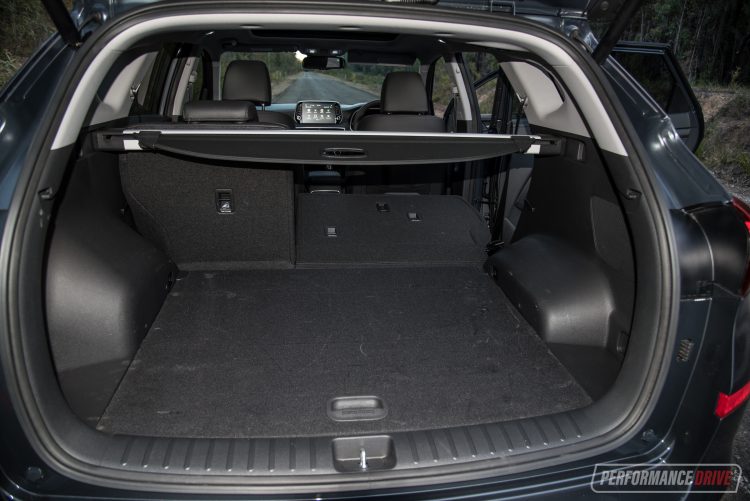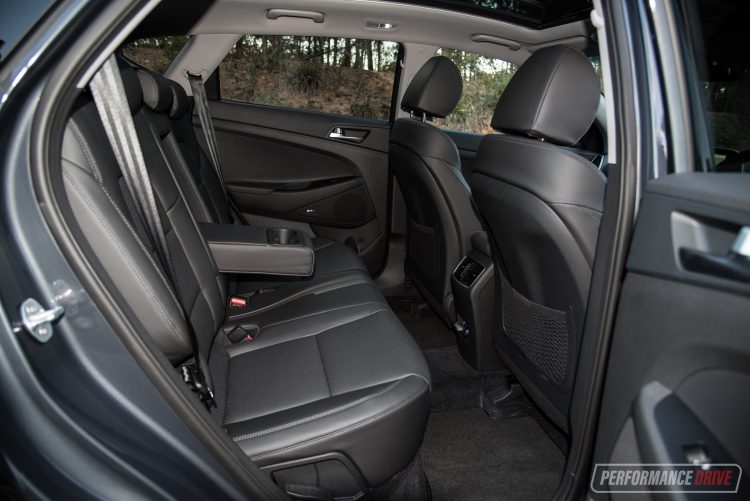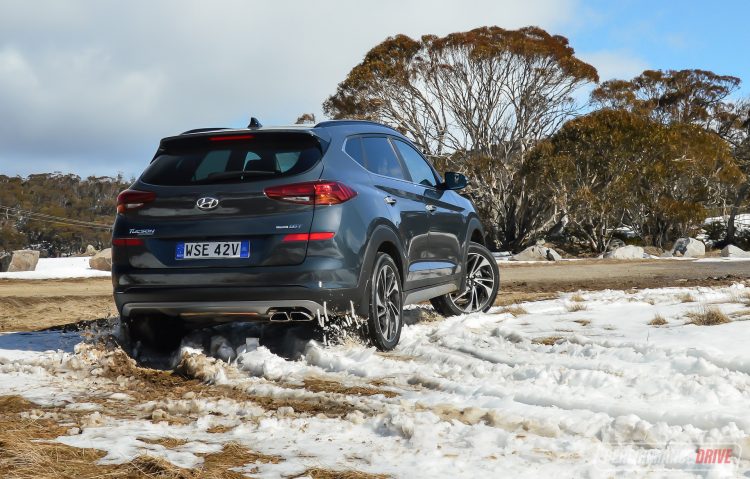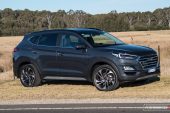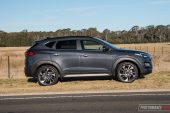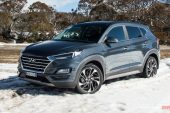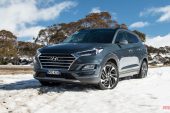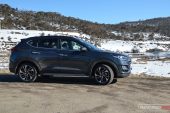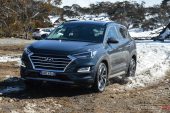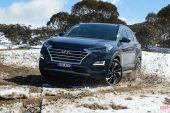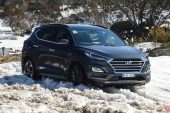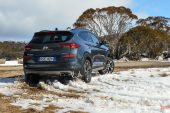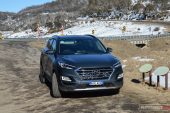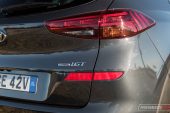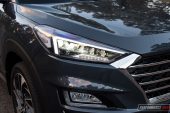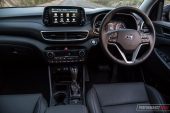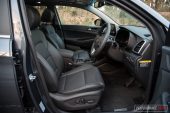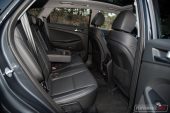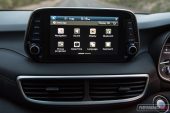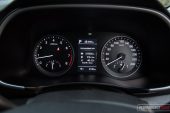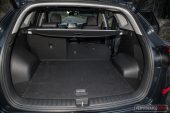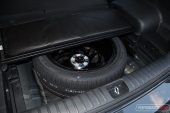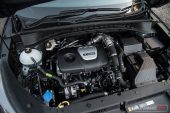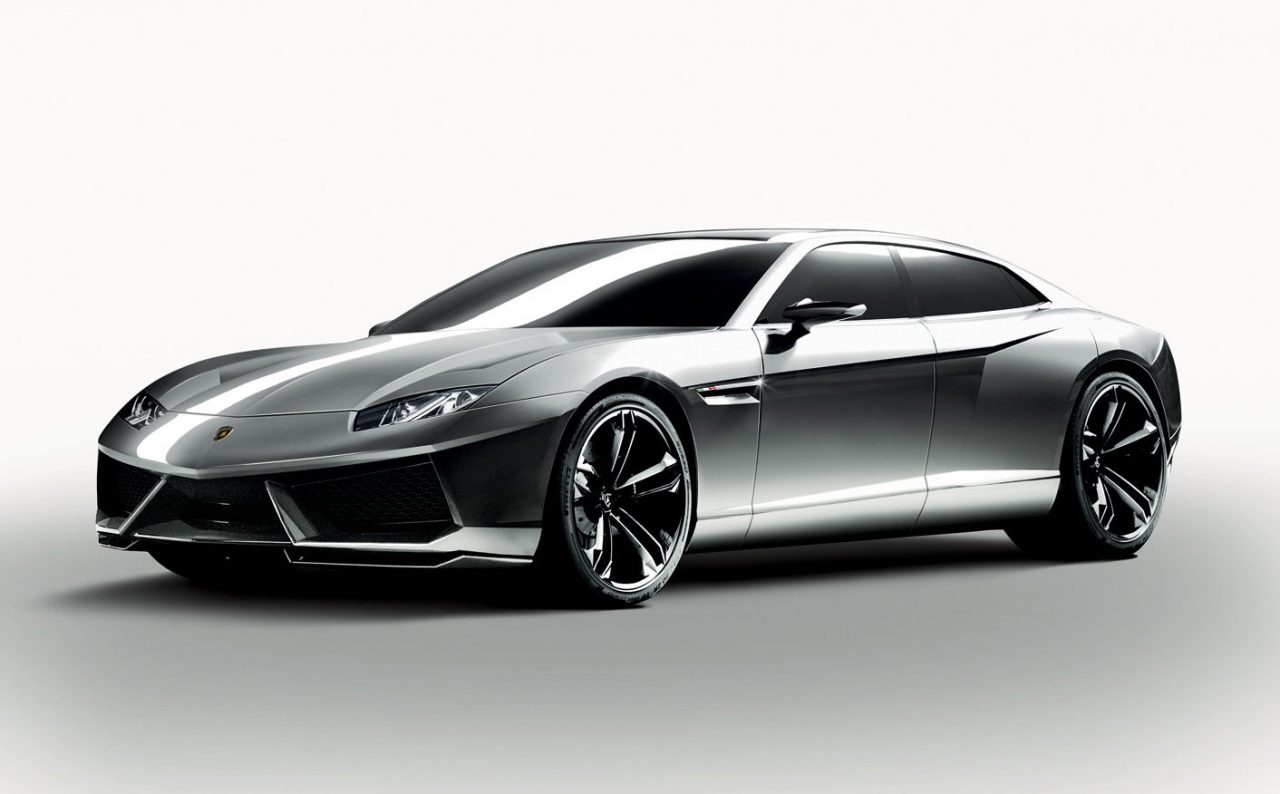The top-selling Hyundai Tucson keeps sales strong with a mid-2019 update for MY2020. We decided that the perfect way to test the flagship Highlander variant would be to take it on an adventure to the high lands of the NSW Kosciusko National Park.
Buyers can choose from the entry level Active, the Active X, the Elite, or the top spec Highlander. But if you want the zippy 1.6L turbo petrol, you will need to opt for the Elite or Highlander. The previous entry-level Go has been deleted and replaced by the Active.
For the most affordable Active model in manual transmission, prices start at $29,290. And prices for the Highlander with the 1.6T jump to $46,500, or $48,800 for the CRDi diesel option (plus on-road costs).
2020 Hyundai Tucson Highlander 1.6T – THE SPECS
[column width=”47%” padding=”6%”]Engine: 1.6-litre turbo four-cylinder
Output: 130kW@5500rpm / 265Nm@1500-4500rpm
Transmission: Seven-speed dual-clutch auto
Drive type: All-wheel drive
Wheels: F & R: 19×7.5, 245/45
ANCAP: Five stars
Tare weight: 1627kg
Power-to-weight: 12.51:1 (kg:kW)
Official fuel economy: 7.7L/100km
Economy during test: 7.5L/100km
Fuel capacity/Type: 62L/91 RON[/column] [column width=”47%” padding=”0″]Power efficiency: 16.88kW:L/100km
0-60km/h: 4.42 seconds*
0-100km/h: 8.85 seconds*
60-110km/h: 6.25 seconds*
1/8 mile: 11.07 seconds at 111.7km/h*
1/4 mile: 16.86 seconds at 137.3km/h*
Max acceleration: 0.728g
100-0km/h braking: 3.08 seconds at 40.62 metres*
Max deceleration: -1.079g
Decibel at idle: 36*
Peak decibel at 60-100km/h: 84*
Priced from: $46,500[/column][end_columns]
* Figures as tested by PerformanceDrive on the day. Factory claims may be different
2020 Hyundai Tucson Highlander 1.6T – THE PACKAGE
The Tucson shares the same foundations as the Kia Sportage, but it manages to look totally different. Proving to be a real winner on the market, consistently scoring in the top four for sales in this class every month, the Tucson uses a fluid and smooth design theme from front to rear.
On the inside, the interior is also clean and user-friendly. Controls are well laid out and non-intrusive to your space. Surfaces feel sturdy, but not the most premium in quality and feel in some areas for this end of the lineup; some hard plastics are used around the doors and dash. We love the easy-to-read instrument cluster and the soft blue lighting used to light up the buttons at night.
If interior space is highly important to you, the Tucson offers near-class-leading storage. There are large door pockets to throw your belongings into, and many other generous spaces throughout the cabin to store items. Getting in and out of the cabin is made easy too, thanks to the natural height of the SUV.
Leg and headroom in the front and rear is perfectly suitable for a growing family. Even in the second row, larger adults won’t feel squashed on longer trips – it feels bigger than some large SUVs. Rear passengers are also looked after with a climate vent, and USB and 12-volt sockets for their gadgets.
In the boot, there’s an abundance of room back there, too. It measures in at 488 litres, or 1478 litres with the rear seats folded down. This makes it slightly bigger than its twin, the Kia Sportage, and bigger than the Mazda CX-5’s 442L. It is, however, smaller than the new segment-leading Toyota RAV4’s 550L offering. But the space here is more usable than some other boot shapes. And credit is due to Hyundai for providing a full-sized alloy spare wheel – this uses up extra space. It all swallowed our skis and ski gear with ease.
All Tucson models come standard with forward collision warning, lane-keeping assist, driver attention alert, a rear-view camera, and rear parking sensors, at minimum. The Highlander adds auto-dipping high-beam headlights, an upgraded sound system with separate amplifier, digital radio, sat-nav, 19-inch alloys, push-button start and proximity key (although you still need to push the button on the handle), and heated and ventilated electric front seats.
It also comes with blind-spot sensors, rear cross-traffic alert, adaptive cruise control, a parking assist system, handsfree power tailgate, panoramic sunroof, cooled glove box, tyre pressure monitoring, heated steering wheel, rain-sensing wipers, wireless phone charging pad, and Hyundai’s Auto Link Premium system with Android Auto and Apple CarPlay.
The eight-speaker sound system by Infinity produces great quality sound. It is controlled by a simple-to-use and well-positioned 8.0-inch touch-screen media interface. Lower-spec models only score a 7.0-inch screen. It would be good if the screen was higher resolution to bring it up to industry standards, but we suspect such tech will be evolved with the next-gen model next year.
The suite of features offered in the Highlander are all a modern family could need, and this variant certainly meets or exceeds the class standards in terms of packaging. Minor misses are no digital instrument cluster, and there is no speed sign alert feature available. The lack of a proper proximity key with handsfree unlocking is also a bit of a shame.
2020 Hyundai Tucson Highlander 1.6T – THE DRIVE
Around the city, this 130kW 1.6T has enough enthusiasm to keep up with traffic, and it feels pretty zippy doing so. Up the hills though, 265Nm of torque means you do have to push it a little to get the job done, especially if you’re carrying a full load. The hilly and windy Kosciusko Road to the ski slopes in NSW were a perfect test. We had the ski gear packed and two passengers on board, and it showed no sign of weakness so long as you put your foot down or if you hold it in gear.
There’s always the diesel variant if lots of torque is most important to you. It offers 400Nm and 136kW. However, we find the 1.6T to be better at cruising on the freeway. The dual-clutch seven-ratio auto helps to keep the engine revs low at higher speeds, leaving the engine to just purr along. The eight-speed auto offered in the diesel might actually help if it were offered here as well.
Across the 0-100km/h sprint, we clocked a best of 8.85 seconds. This is slightly slower than our last-tested Tucson 1.6T; the Elite variant, back in 2016. It managed 8.02 seconds. We think the difference here is probably down the added luxury and weight of the Highlander, such as the full glass sunroof, heated/cooled seats, and leather trim and the such.
In terms of driving dynamics, the Tucson is sturdy and predictable. It approaches corners with nominal body roll and a suitable amount of feedback returned to the driver, for this style of car. And the steering offers a decent amount of weight at both low speeds and faster highway speeds, without feeling like a sloppy SUV or a restless sports car.
Those well-behaved dynamics are due to local engineering and testing. Hyundai fine-tunes the ride here in Australia to suit the local conditions. This translates to a confidently controlled ride on rough country roads, yet pleasant enough for around town.
During our testing, which included lots of highway driving, we achieved a fuel consumption average of 7.5L/100km. Its official rating of 7.7L/100km is roughly average for petrol soft-roaders with similar engine outputs. Given that the fuel tank is 62L, you can expect to travel at least 700km between fuel stops, so long as you’re not a leadfoot.
Hyundai as a brand has sharply improved its reputation for long-term reliability, quality, and design in recent years. Like other Hyundai models, the Tucson is another step upward among the competition. This is helped by Hyundai offering one of the most generous warranties on the market; five years and unlimited kilometres. On top of this, the company is increasing the warranty to seven years for select models sold in 2019.
2020 Hyundai Tucson Highlander 1.6T – THE VIDEO
2020 Hyundai Tucson Highlander 1.6T – THE VERDICT
Our week with the Korean-built mid-sized SUV in the NSW snowy mountains has been a perfect match of car and landscape. We thoroughly enjoyed our time with it. The Tucson proves to be a technology- and safety-filled soft-roader with style and decent capability, and enough space for a long weekend away. It is perfectly proportioned too, so it’s very easy to navigate and park.
If you need a value-for-money SUV that will take you on those dirt road (or snow) adventures, and during the week scamper you around the city streets, the Tucson is worth checking out. The top Highlander model has become reasonably priced over the years too, as so many segment rivals have started popping up with near and beyond $50k price tags.
[column width=”47%” padding=”6%”]PROS:
– Feature-packed and great value compared with pricier rivals
– Full-size spare wheel
– Spacious interior and back seat; all very user-friendly
– Design still looks modern and elegant
– Easy to drive
[/column] [column width=”47%” padding=”0″]CONS:
– 1.6T misses out on 150kW tune
– Need to press a button to unlock doors; no handsfree
– No speed sign alert[/column][end_columns]
As always, if you’re thinking about buying a new car don’t forget to click here to speak with our car buying specialists.


